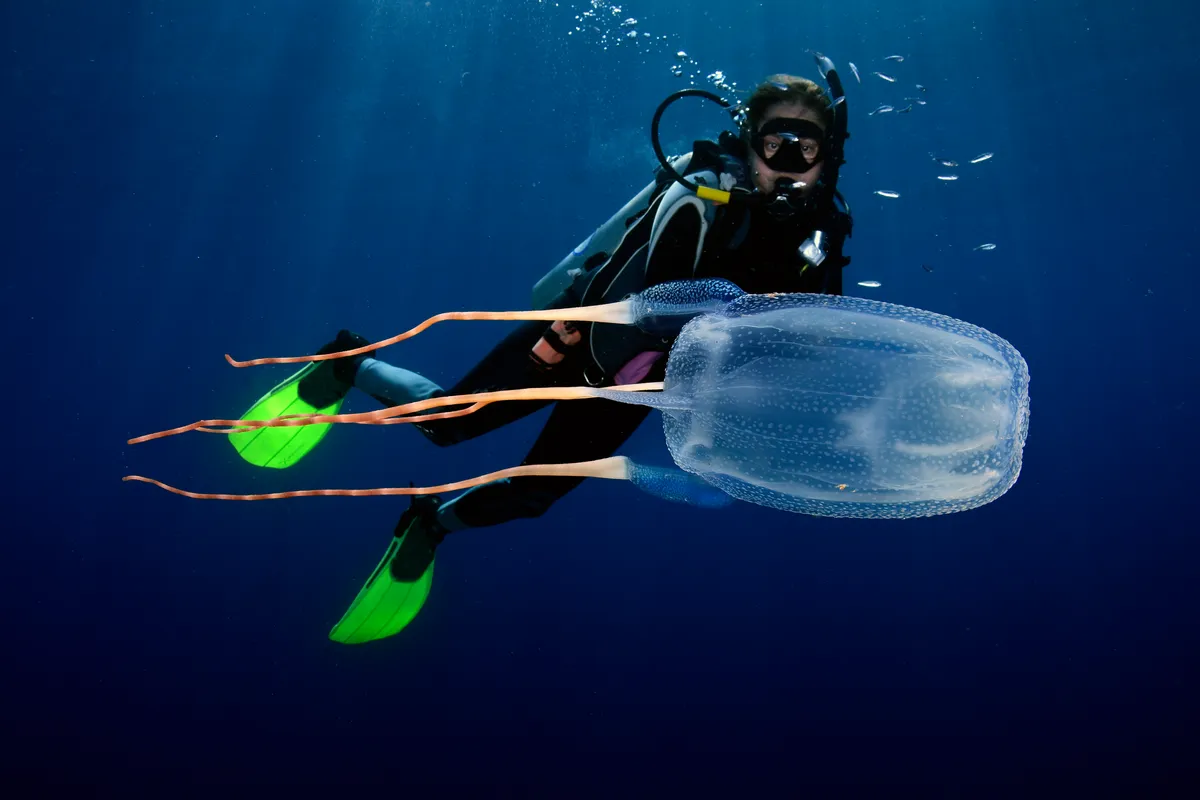What are jellyfish?
Jellyfish are marine animals with a bell-shaped body and stinging tentacles, which are a type of invertebrate (no backbone).
How do jellyfish reproduce?
The typical jellyfish life-cycle has two alternating generations. Medusae, the floating form, reproduce sexually to spawn seabed polyps that resemble sea anemones, which clone lots of replicates. When conditions are right, these bud off to form ephyrae – baby jellyfish.
What’s the most venomous jellyfish?

A sting from a box jellyfish (also known as a sea wasp), the most venomous animal on Earth, can kill a human in two minutes.
Do jellyfish have brains?
Though jellyfish may seem little more than a bag of angry water, they are sophisticated predators that can eat, swim, reproduce and taunt humans all without a centralised brain. Instead, they have networks of nerves that send signals around the body so that, for example, a single tentacle can deftly move a piece of prey to the invertebrate’s mouth.
One group of nerves, the ‘diffuse nerve net’, relays sensory information to the muscles, while another group, the ‘motor nerve net’, stimulates muscles to contract. Meanwhile, finger-like structures on the edge of the bell, called rhopalia, contain pigment spots that sense light and crystals that help the jellyfish to sense up and down. They also help to co-ordinate the pulsing rhythm of swimming.
An evolutionary success story, jellyfish have been around for more than 500 million years: who says being brainless has to hold you back?
Answered by Helen Pilcher
How big are jellyfish?
Of 2,500 or so jellyfish species, some 90 per cent are smaller than a human thumbnail and rarely researched. The sole study of the bloom dynamics of these species found a five-fold increase in 20 years.
Jellyfish grow very rapidly – some can expand from a 2mm ephyra to the size of a dinner plate in a matter of weeks.
Are there any jellyfish fossils?
Jellyfish fossils, though rare, do exist, some claimed to be over 600 million years old. Many closely resemble living species.
How long do jellyfish live for?
One jellyfish species, Turritopsis dohrnii, is biologically immortal. After an individual medusa dies, its cells re-aggregate into the polyp form and the life-cycle begins again.
Main image: Northern sea nettle - Chrysaora sp. Scyphozoa. © Alexander Semenov/Getty




